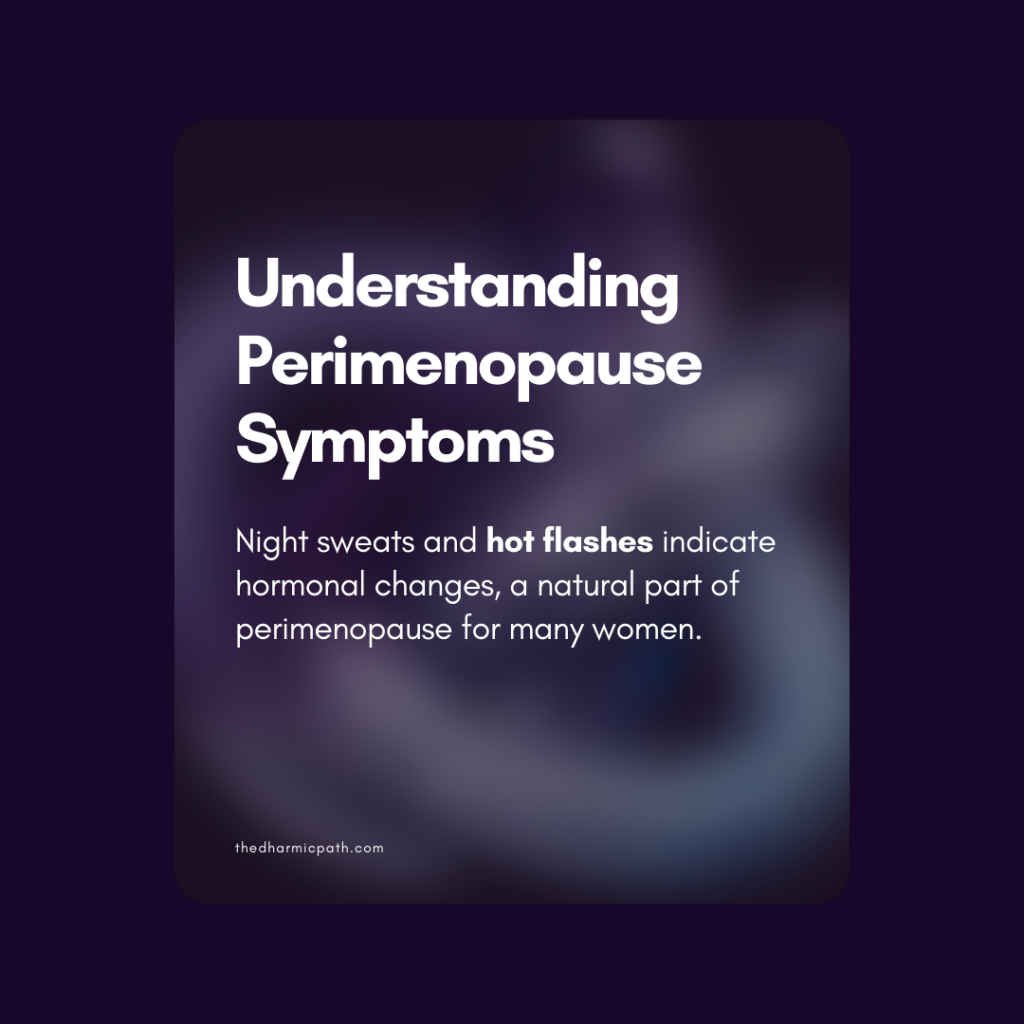Night Sweats & Hot Flashes: It’s Not About “Hormonal Rhythm”


Paige Elizabeth
Founder and Coach
Most women are told: “Night sweats and hot flashes just mean your hormones are changing. That’s perimenopause.”

But that story is incomplete — and misleading.
Hormones fluctuate all the time. They did when you were 14. They do when you’re 44. So why don’t teenagers walk around fanning themselves through hot flashes?
Because it isn’t the hormones themselves that create the sweats and surges. It’s the brain — specifically your hypothalamus, the thermostat — and how strong your HPA axis buffer is when hormones swing up and down.
The Same Hormones, Different Experience
In your teens: estrogen spikes, progesterone dips, cycles are unpredictable. Yet most teens don’t have hot flashes. They might have acne, mood swings, or cramps — but rarely night sweats.
In your 40s: estrogen spikes, progesterone dips, cycles shorten. The swings are biologically similar. But now you might wake up drenched or flush hot in the middle of a conversation.
Same rhythm. Different experience. The difference isn’t in the ovaries — it’s in the buffer.
The Role of the Buffer: Why Your Thermostat Overreacts
Your hypothalamus and HPA axis (hypothalamic–pituitary–adrenal system) act like insulation in your house.
- As a teenager: the insulation is thick and resilient. Hormones swing, but inside feels steady.
- In your 40s: stress, trauma, nutrient depletion, years of pushing through — the insulation has thinned. Now every little change outside is felt inside.
When the thermostat is oversensitive, it overreacts: vessels dilate, heat dumps, you sweat. That’s a hot flash.
Why the Buffer Thins Over Time
- Chronic stress & burnout wear down adrenal reserves.
- Micronutrient depletion (magnesium, zinc, B vitamins, amino acids) leaves the brain without the raw materials to regulate temperature.
- Unresolved trauma keeps the nervous system on high alert, so hormonal shifts register as threats.
- Lifestyle habits (stimulants, alcohol, poor sleep) bypass the natural rhythm, confusing the thermostat further.
So when your hormones dip at 44, it feels like an alarm. When they dipped at 14, it felt like background noise.
How to Build a Stronger Buffer Again
- Nervous system regulation → breathwork, somatic release, boundaries, and practices that re-establish parasympathetic dominance.
- Adrenal support → steady blood sugar, mineral balance, and in some cases, strategic hormone precursors.
- Micronutrients → the cofactors your brain needs to calm the thermostat and smooth the ride.
- Trauma release → clearing the old imprints that keep your HPA axis braced for danger.
The Reframe: Hormones vs. Insulation
Hot flashes and night sweats are not your hormones “betraying” you. They’re signs that your insulation has worn thin.
Your teenage body weathered the same estrogen highs and progesterone drops without burning up.
Why? Because the buffer was intact.
The work now is not to fear the hormones, but to rebuild the buffer so the thermostat in your brain can do its job quietly again.
Takeaway: Hormones will always rise and fall. That’s biology.
The difference between a peaceful transition and a miserable one is the strength of your brain–HPA axis buffer.
Strengthen the insulation, and the storms pass without setting your body on fire.
Ready to Rebuild Your Buffer?
You don’t have to suffer through night sweats and hot flashes. Your body isn’t broken — it’s asking for support.
Book a Free Reset Call today and discover how to repair your nervous system, balance your hormones, and reclaim steady energy.
